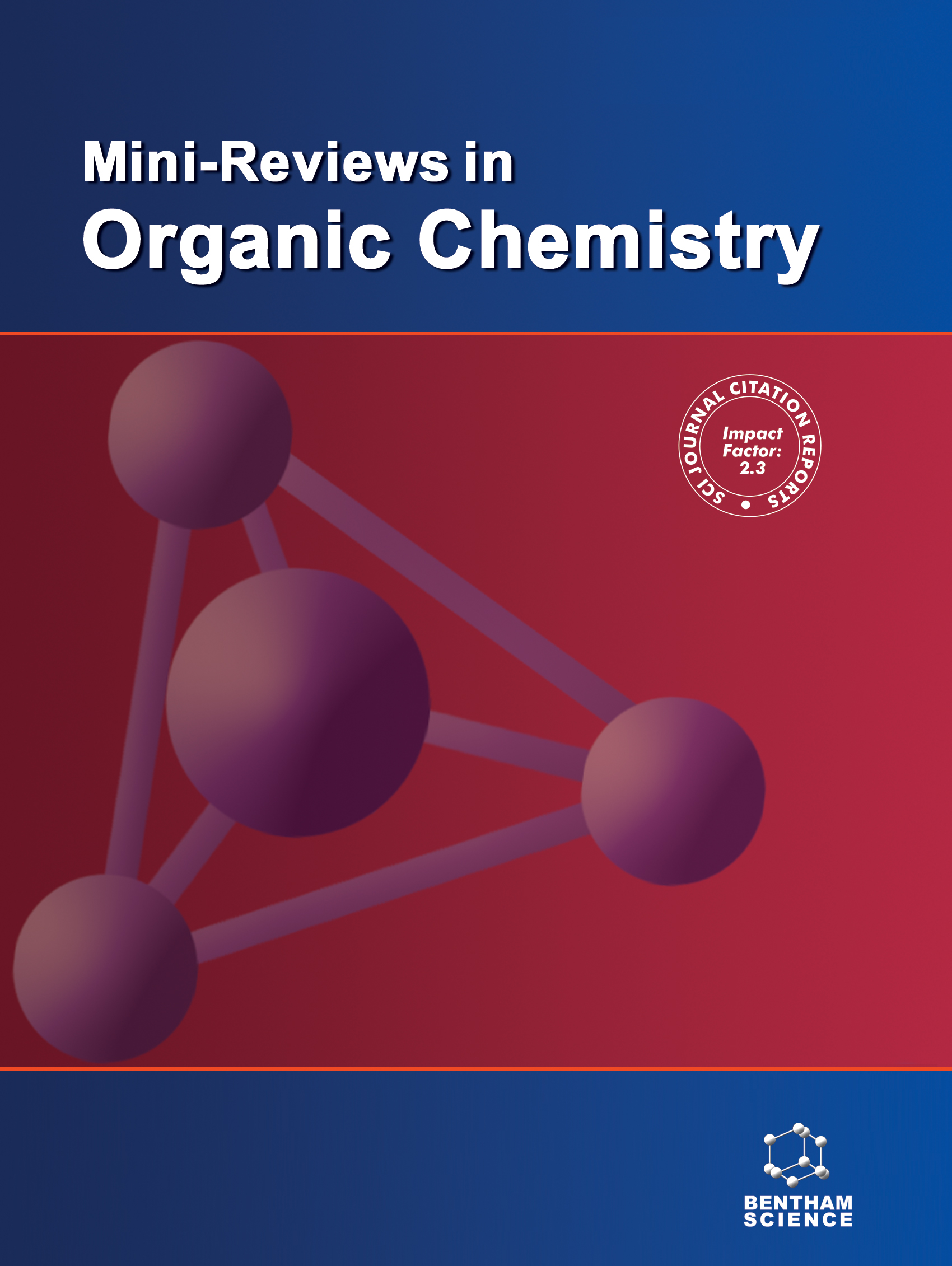- Home
- A-Z Publications
- Mini-Reviews in Organic Chemistry
- Previous Issues
- Volume 20, Issue 2, 2023
Mini-Reviews in Organic Chemistry - Volume 20, Issue 2, 2023
Volume 20, Issue 2, 2023
-
-
A Mini-Review on Pyridazine Analogs: Chemical and Pharmacological Potentials
More LessAuthors: Saad Alghamdi and Mohammad AsifThe pyridazinone derivatives have diverse biological potential and are easily synthesized. Due to this, researchers and chemists have paid attention to the design and development of novel and effective bioactive compounds. The substituted pyridazines have shown a wide range of pharmacological activities, such as analgesic, anti-inflammatory, antibacterial, antifungal, anticonvulsant, antidepressant, antianxiety, a Read More
-
-
-
Research Progress on Indoor VOC Pollution and Control
More LessAuthors: Xiang Li, Rui Cui, Baojun Yang, ShiYu Xie, Guoming Zeng, Hengwei Zheng and Huaili ZhengNowadys, indoor air pollution is harming human health and has become a global problem. Therefore, research on indoor air pollution is necessary. This paper systematically reviews the research progress of indoor air pollution in recent years, mainly including indoor pollutant types and sources, indoor pollutant detection methods and equipment, pollutant release simulation models and quality standards, indoor air treatment tech Read More
-
-
-
Microwave-promoted Synthesis of Novel Bioactive N-based Heterocycles
More LessOur environment is in a continuous state of change, which, in turn, demands sustainable, eco-friendly, and safer chemistry techniques. This, in turn, has led to the green chemistry principles coming into the picture in recent years. Over the years, microwave heating has evolved as a green protocol in organic synthesis. The advantages of the safe and environment-friendly MW heating approach include a simple experimental Read More
-
-
-
Odyssey of Deep Eutectic Solvents as Sustainable Media for Multicomponent Reactions: An Update
More LessDeep eutectic solvents (DESs) are frequently defined as binary or ternary mixtures of compounds that are able to associate mainly via hydrogen bonds. As the interest in green sustainable solvent’s spread over the entire scientific community, DESs find applications as alternative solvents and/or catalysts for organic transformations. Advantages such as easy reproducible preparation, low cost, environmentally benign natur Read More
-
-
-
Sulfonamide a Valid Scaffold for Antioxidant Drug Development
More LessAuthors: Melford C. Egbujor, Jorge Garrido, Fernanda Borges and Luciano SasoLike the well-known sulfa drugs, Sulfonamides are ascribed to a myriad of biological activities, including antioxidant activity. In fact, several tertiary sulfonamides, particularly N, Ndisubstituted analogues, are recognized as antioxidants that can prevent or minimize oxidative damage associated with several oxidative-stress-related diseases. The structural diversity of this class of compounds paved the way for drug discovery prog Read More
-
Volumes & issues
-
Volume 22 (2025)
-
Volume 21 (2024)
-
Volume 20 (2023)
-
Volume 19 (2022)
-
Volume 18 (2021)
-
Volume 17 (2020)
-
Volume 16 (2019)
-
Volume 15 (2018)
-
Volume 14 (2017)
-
Volume 13 (2016)
-
Volume 12 (2015)
-
Volume 11 (2014)
-
Volume 10 (2013)
-
Volume 9 (2012)
-
Volume 8 (2011)
-
Volume 7 (2010)
-
Volume 6 (2009)
-
Volume 5 (2008)
-
Volume 4 (2007)
-
Volume 3 (2006)
-
Volume 2 (2005)
-
Volume 1 (2004)
Most Read This Month
Article
content/journals/mroc
Journal
10
5
false
en


